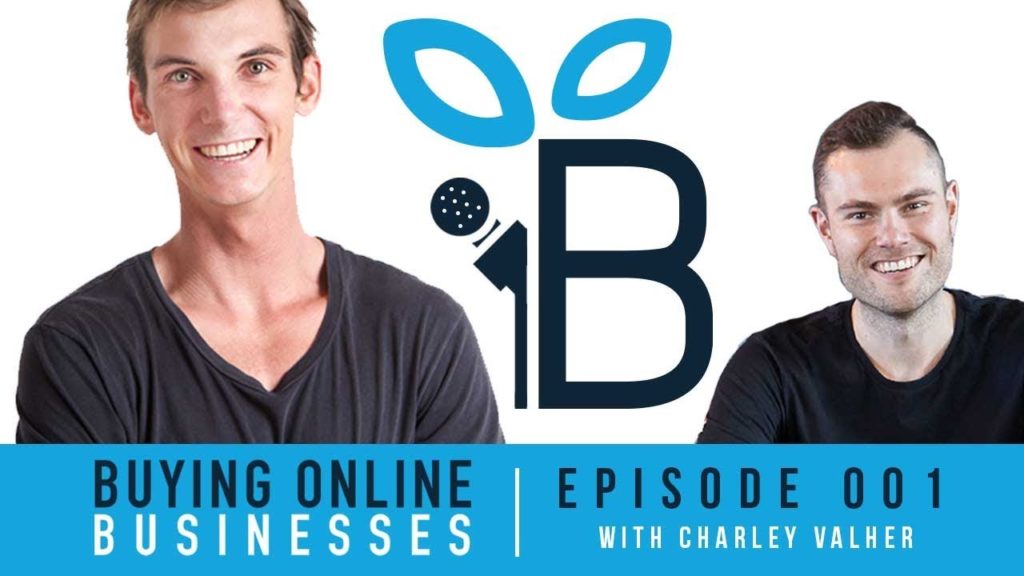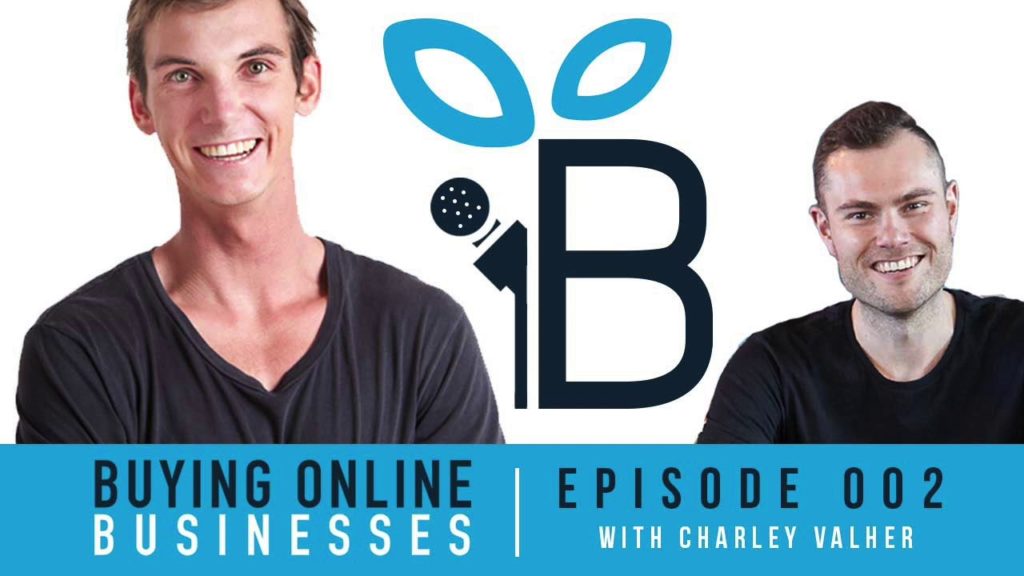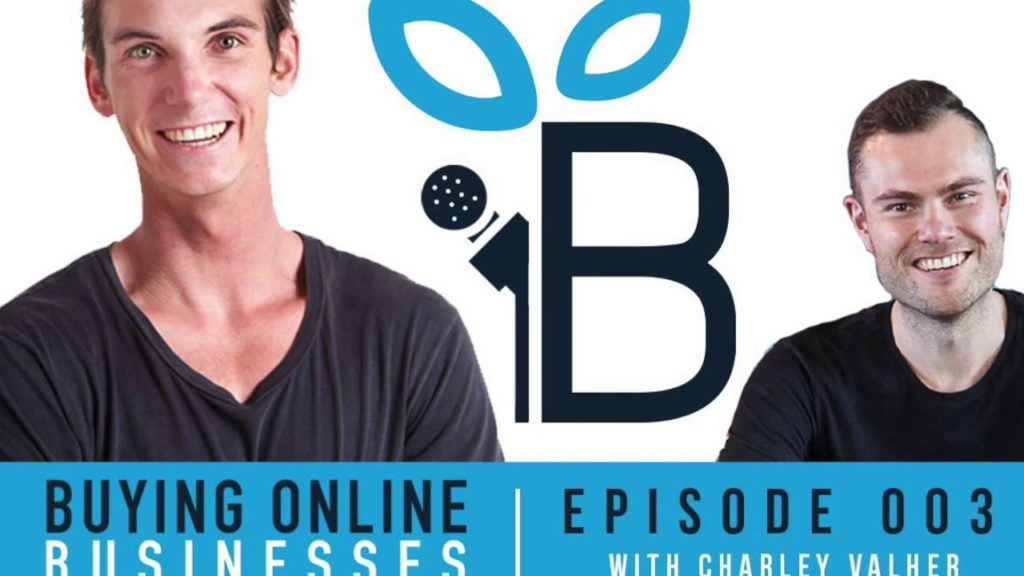In today’s fast-paced digital landscape, where every click counts, crafting compelling copy and designing user experiences that resonate with your audience can be the difference between stagnation and skyrocketing success.
For today’s episode, Jaryd Krause has invited Chris Silvestri to share his expert advice in copywriting and UX that creates exceptional profits.
Chris is the founder and conversion copywriter at Conversion Alchemy, a company specializing in assisting SaaS and ecommerce businesses in converting website visitors into loyal customers. His professional journey has taken him from a background in software engineering in industrial automation to copywriting and UX design at a usability testing startup. As a “conversion alchemist,” Chris leverages his diverse skill set to help clients achieve growth and success.
They talked about digital psychology. How much work goes into research when creating clever copywriting and user experience? How does Chris separate the research into three different areas? What are they, and why does he do that?
They also dive into constructing a homepage that your audience loves and wants to take the next step with you. Why is good copywriting not about fancy words and the actual writing itself? And what good branding can do, examples of good branding and how to use these strategies for yourself?
There’s so much value in this episode that it’s something you definitely won’t want to miss. Tune in now!
Get this podcast on your preferred platform:
RSS | Omny | iTunes | Youtube | Spotify | Overcast | Stitcher
Episode Highlights
03:27 What is digital psychology?
09:08 The 3 important areas for copywriting and UX research
12:22 Proper implementation of collected data
20:29 CTAs depend on the type of decision makers
34:40 How to be good at copywriting?
37:36 How can businesses set themselves apart from the competition?
Courses & Training
Courses & Training
Key Takeaways
➥ Chris explains that digital psychology is his branded way of defining his services, aiming to be more specific than traditional copywriting. It involves understanding people, and research is a significant part of it, making up about 70% of his work. He dives deep into understanding the thought processes, decision-making, and knowledge gaps of potential and existing customers, using this research to inform his copywriting work.
➥ In homepage development and testing, Chris specializes in user-centric strategies. One of his key focuses is on homepage positioning, which begins by addressing the immediate needs and thoughts of visitors, aligning with their intent and concerns. Furthermore, he tailors the placement of Call to Action (CTA) elements based on user types, distinguishing between fast and slow decision-makers. Chris relies on data-driven insights to inform the precise positioning of CTAs. The testing process is divided into several stages, starting with usability testing, an initial phase involving real users to identify usability issues. Wireframes and mockups come into play for early usability testing, and high-fidelity mockups are subjected to further validation. This meticulous approach extends into the development phase, ensuring that the website engages users effectively and guides them seamlessly through their online journey.
➥ Chris highlights the significance of understanding a client’s brand personality and using it consistently in messaging, which builds trust and allows for artistic expression while staying on-brand. They discuss how creativity can set businesses apart, even in perceived “boring” industries like SaaS B2B, by giving them a unique voice and angle on their value proposition.
About The Guest
Chris Silvestri is the founder and conversion copywriter at Conversion Alchemy, where they help SaaS and ecommerce businesses convert more of their website visitors into loyal and excited customers.
He went from software engineer in industrial automation to copywriter, then to UX designer at a usability testing startup. As a conversion alchemist, he combines everything he learns along the way to help his clients grow.
Connect with Chris Silvestri
Transcription:
Did you know good copywriting does not come from just the writing itself? It goes way beyond that. Hi, I'm Jaryd Krause. I'm the host of the Buying Online Businesses Podcast. And today, I'm speaking with Chris Silvestri, who is the founder of Conversion Copywriter and Conversion Alchemy, where they help SaaS and e-commerce businesses convert more of their website businesses into loyal and excited customers.
He went from software engineering in industrial automation to copywriting, then to user experience at UX Design, a usability testing startup. And as a conversion alchemist, he combines everything he learned along the way to help his clients grow exceptionally.
Now, in this podcast episode, Chris and I talk about what digital psychology is, how Chris formulated the term and why—why he did that for himself, why he did that for his branding. There are so many great reasons for that. We also talk about how much work goes into the research when creating clever copywriting and user experiences.
Chris also talks about how he separates his research into three different areas, what they are, why he separates them into those three different areas, and how valuable and important that is for each step for the user.
And then we move on to talking about how to construct a homepage that your audience loves. It speaks to them, and it actually facilitates them taking the next step versus what a boring homepage does, which can—in my words—bastardize its relationship with the person who comes to it first by having the wrong sort of USP or language and things on the page.
We also talk about why good copywriting is not about fancy words or the actual writing itself. Instead, we talk about what's far more important than that. We also talk about what good branding can do, some examples of good branding, and how you can use these for your own business to extract more profit from it and build more trust and relationships with your audience. And there's so much value in this episode. You guys are absolutely going to love it.
I know a lot of you guys are listening here for how to buy a business, and I've got a lot of podcast episodes on that. Also, before you get to growing a business, like we talk about in this episode, make sure you get my due diligence framework if you're looking at buying a business. You can get it from buyingonlinebusiness.com/freeresources. That due diligence framework takes the guesswork out of how to buy a business. Now, let's dive into the pod.
Do you have a website you might want to sell either now or in the future? We have a hungry list of cashed up and trained up buyers that want to buy your content website. If you have a site making over $300 per month and want to sell it, head to buyingonlinebusinesses.co/sellyourbusiness. Or email us at [email protected], because we will likely have a buyer. The details are in the description.
Chris, welcome to the podcast.
Chris Silvestri:
Thank you, Jaryd, for having me. It's so good to be here.
Jaryd Krause:
I look forward to this chat. I am fascinated by something you have and something you talk about, which is digital psychology. The first can of worms I want to sort of open up What is digital psychology and what do you mean when you say digital psychology?
Chris Silvestri:
Yeah. So it's kind of my branded way of defining what I do. I didn't want to leave it to myself to talk about copywriting, right? Because a lot of business owners associate copywriting with freelancing and writing blogs, I wanted to be a bit more specific in what I do. And that's also something that I do for clients, right? Positioning. So using digital psychology is my way of positioning myself.
And when I say digital psychology, I mean that copywriting is mostly about understanding people. And that's the biggest area that I work in. So for me, research is probably 70% of the work and then everything else comes after. So I look into every single facet of your potential customers, right? Potential customers and actual customers.
So for every project, I try to understand how they think and make decisions. What do they know about the website? What don’t they know? And try to fill in the gaps with all the research they do. So, yeah, digital psychology is my way of defining that type of research that I do for my copywriting work.
Jaryd Krause:
Cool. And I guess this is a meta sort of question. Are you doing this to distinguish yourself, be a little bit different than everybody else and have your own sort of brand behind it? Is that the sort of ideology around it? Because that could be something that people could draw from for their own businesses as well, right?
Chris Silvestri:
Yeah, yeah, that's for sure. It's something that I do to differentiate myself. But I would also say it's the approach that I use. Because a lot of what I do also comes from UX design and user experience design. I used to work at an agency as a UX lead as well after transitioning from being just a copywriter.
So all the things that I've learned about how users interact with the website, how they make decisions, how they consume content—all of those insights—I kind of integrate them with everything that I knew about copywriting. So it's both a positioning move, but it's also actually the real description of what I do. I try to do things a bit deeper than the typical copywriter.
Jaryd Krause:
Love it. I absolutely love it. That's why I'm fascinated and so excited for this chat. I know we're starting off with some surface level questions here. We'll get into the weeds and the hardcore value soon. But I want to first ask, who's your typical client? Are they SaaS businesses and e-commerce businesses? Or do you ever work with large blogs as well?
Chris Silvestri:
So I would say large blogs, not so much. I've done a couple of website audits for blogs, but not much else. Maybe some conversion optimization will work. So I'm doing some testing. But typically, my clients are SaaS businesses or between six-and-eight-figure SaaS businesses with not a huge team between 20 and 100 people. Product market fit. And it could also be both bootstrapped and funded. Typically, series A and B.
For e-commerce businesses, I would say it's quite a different project because for e-commerce, you might have a lot of products on the website. So it's all about the UX navigation, improving the user flow through the website. So for those projects, it's not a very big team. Typically, it's just either a solo founder with a super small team or just the founder, where basically I interact just with them. And we do this very intimate project. So, yeah, mostly e-commerce and SaaS businesses are typical clients.
Jaryd Krause:
Love it. Love it. And so, let's say, let's use a SaaS business, for example, as we go through a bunch of the questions I want to ask. And you can relate to any sort of case study or use studies that you've done with clients in the past.
When somebody comes to you and you mention that 70% of the work you do is basically in R&D, right? Which is awesome because what they normally say is that if you want to chop a tree down, you spend most of your time sharpening the axe, right?
Chris Silvestri:
Yeah, exactly.
Jaryd Krause:
So what is the data? Let's dig into some of the data, metrics and stuff that you look at. Because, I guess—hang on, hang on. I'm just trying to think about how somebody here listening to the podcast is thinking, “Why start with research?”
Well, I guess the end product is going to help high conversions. It's going to be great for user experience and navigation, and it's going to just make them feel good about making the purchase, right? So we'll come to that part, I guess. Is there anything that you want to add to that before we dive into some of the data points that you look at for R&D?
Chris Silvestri:
No. I would have to say I have a very formulaic, structured system that I use to approach these. So if you want, we can just dive into the main areas that I use and the lenses that I use to do research.
Jaryd Krause:
Yes, please. Let’s do that.
Chris Silvestri:
So I typically see research in three areas, right? So we have internal research, which is typically speaking with my client and their team. So I typically run interviews with the marketing team and product team, especially for the SaaS support team as well. So I try to gather as many insights as possible from their internal view.
How do they see the product? And also, this is super interesting when you find that a lot of different team members have different views on value propositions or positioning, right? So I try to be the person who puts them all together and unifies their view.
So that's one, the internal research. The second one, it's the customer—I mean, user customer research or external research. And I divide that into the two sides, which are the prospect side. So a website visitor, someone who's still not a customer, and the customer side
And that's because I want to know, okay, what's their view? What are they thinking before buying and what are they thinking after buying? What happens in that transformation in between? And I want to reconstruct the whole journey through those insights.
The third area is market research. So obviously, we can't make decisions in a vacuum. We need to know what other competitors or other businesses are doing in the space. And that's why I run competitor research. I look at reviews. So a lot of reviews on review websites, or for e-commerce, Amazon reviews or product reviews—anything that we can find.
I categorize them by themes, I organize them, I see what comes up, what people say, and, especially, it's super helpful to see what words they use so that we can maybe mirror them on the website.
And the market research is what informs a lot of the positioning that I do. So positioning work is also another thing that I work on along with the copy and messaging. Typically, when cclientswant to revamp their positioning because they're not sure what they're doing, or they just want to improve the product, they want to crystallize it and make it more clear. Maybe their teams are not unified, as I was saying, so they want one single document telling everybody how they should speak to customers in which media. So that's another thing they do.
So these three areas are kind of the lenses that I use. So the internal research, external and market research—this is the way that I approach it.
Jaryd Krause:
Awesome. Awesome. So I like the breakdown of the journey—the two different journeys that people are taking before they buy and then what are they thinking and what are they trying to do after they buy?
When you've got all of this data, which pieces of data apply to it, or how do you take it and then implement it into the user experience, navigation and copywriting? And what sort of thing starts first? Do you start with the messaging that you're trying to get across at each different stage that somebody is going through? And then do you turn that into text, navigation and UX? What does that look like?
Chris Silvestri:
Yeah. Yeah, interesting question. So a lot of times I actually work on the navigation site's UX structure after I'm done with the copy. And that's because I want to have a clear idea of, okay, how many pages we need. Do we need to add a couple more pages to fill in the gaps in the journey? And I work on that.
Jaryd Krause:
You start with the copy instead.
Chris Silvestri:
Yeah, yeah. So copy first. But even before working on the copy, what I do is create a research positioning document where I dive into all the findings, right? So I define anything from user demographic data to psychographic data. So how they make decisions, how they think, when they get their website and then I divide this into user data, competitor data and my client’s data.
So I typically start with the user data because that's where everything starts and cascades from. So it's kind of the opposite of research, right? So for the research, I started with the client because I wanted to know, okay, what do they know? What should I know? How should I approach this market? Because obviously, working with different clients every time, I have to immerse myself in the product and the market first.
So with the research, I start with the client and competitors and then the users and competitors. When I extract the insights, I do the opposite. Start with the users, competitors and clients. Because at the end, we end up with the client's positioning and messaging. So it's kind of the opposite.
And yeah, so this is basically what I come up with before writing every single word. I have this huge document that helps inform the way that I write copy. And then I typically start with the homepage. The homepage for me, symbolizes the whole journey, right? Because the goal of a homepage—
Jaryd Krause:
It's where we start, right?
Chris Silvestri:
Exactly. It's not to sell, but it's basically to sell the next action step.
Jaryd Krause:
Oh, I like that.
Chris Silvestri:
And that's why, on the homepage, that's where I work very hard to come up with a very good value proposition that includes the positioning of the client. And then I think about what the primary and secondary action steps are that we want users to take starting from the homepage. Where do we want them to go on the website? What are our priorities? So from the homepage, that's where everything else falls into place, typically.
Jaryd Krause:
Cool. So I'd love to just know a little bit more about the homepage and what goes into it. You say that you want to showcase that brand's positioning and then sell them on the next step, to get to the next place that they should be going, or that we want them to go to give them value and help them.
So what are you putting on that homepage to do that? What are some of those things that help position the brand well that speak to that user that wants them, that pushes them or drags them, sort of lures them into that next sort of actionable step or next page?
Chris Silvestri:
Yeah. So when I mentioned positioning, what I mean by that is that whenever someone lands on the website, the main things that they want to know are: Is this right for me? What do we do? Who do you do it for? And how do you do it in a different, unique way or better than other solutions? So that's why for me, the homepage always starts with mirroring what they are thinking when they land on the website.
So a lot of companies start with the typical “We do this better than blah, blah, blah,” right? But the problem is that when someone lands on the website and sees that, it's kind of like a pattern interrupt. They are thinking something that's probably different from what you wrote on the page because it's hard to read their mind if you don't do the research. And then, yeah, they kind of did it.
Jaryd Krause:
Are you saying that when people get to the homepage, they typically think they need something else than what they really need, and you need to speak to them about where they're at in their journey?
Chris Silvestri:
No. What I mean is that it's important to mirror exactly what they're thinking on the website, but a lot of businesses don't do that. So they start saying what they do rather than start writing what people are actually thinking of wanting.
So what I do is the first thing on the homepage, which is the value proposition, which mirrors the positioning; it's stating exactly or getting as close as possible to what visitors are thinking in their minds when they land on a website.
And that can be either a problem that they're trying to move away from or an outcome that they're trying to achieve. Those two directions are kind of emotional directions, along with obviously mentioning the solutions that they are looking for. And there are many facets that you can look at, obviously. Yeah, go ahead.
Jaryd Krause:
Yeah. So that obviously comes down to doing the research and doing the work and finding the data of what solution they're trying to solve or what outcome they're trying to achieve versus burning some space on the homepage of a brand saying, “We're the best because...” when that's not actually helping the person understand if your brand or company is going to help them with what they want. Is that right?
Chris Silvestri:
Yeah, exactly. Because the first thing that you mentioned is throwing a feature or a value proposition out there, maybe it's not even relevant. It's something that you think is relevant because maybe it's the newest feature that you just put out, right?
So, yeah, instead, it's much, much better to ease them into the homepage by mirroring what they're thinking and what they're needing in that specific moment. Because context in copywriting in UX is everything. So it's also important to understand where they are coming from. What do they know? How much do they know about the product? So all those little things contributed to coming up with this value proposition. So what they're thinking is the first section of the homepage that I would always start from.
Jaryd Krause:
Yeah. Cool. And then where to next? Is it too much to say, “Hey, start here and get a free trial”? Is there typically more easing into it and more steps they need to take before they are sold on getting an email address or some sort of information?
Chris Silvestri:
No, it depends. I mean, the fact of presenting a call to action right away or not, for me, typically depends on what types of decision maker these people are. Are they fast decision-makers? So do they need just a quick push and are also maybe in a rush on the website and just want to get started? Or do they first need some education and some easing into the whole thing?
So based on that, based on what I see from the research and also because I do a lot of user interaction and tracking analysis, I don't know if you ever used Hotjar—something like Hotjar to track heatmaps where you see where people click.
So I look at those and I see, okay, are people really clicking on this button or not? Should we remove it? Should we move it down? Should we adjust things? So based on all those observations, I decided where to place the calls to action.
And yeah, basically try to satisfy the right types of decision maker, whether it's slow decision maker, fast decision maker, more emotional, or more logical. And that's where the digital psychology aspect comes in again.
Jaryd Krause:
So then you move into testing. What's sort of your next step after that, I guess, before going through and testing? Or are you testing the whole way through? Are you doing this in phases where it's happening over a few months?
Chris Silvestri:
So at the beginning, the only test that I might do is usability testing. So you basically have real users go through the website. Users that are similar are not the exact target audience but might be similar to the target audience.
So they use the website, and you get recorded videos that you can take a look at and see how they went through the journey and where they clicked. They also comment on their experience. So you can hear them talk through their experience, seeing what they think about the website and what struggles or challenges they're having.
So that's the only test that I do at the beginning. And that's because it's super, super quick, super easy and super convenient to do. And it doesn't take away time from the research, but at the same time, it’s kind of like a shortcut into understanding the 80-20 things that we are struggling with on the website. What's broken right at the top? Usability testing is a super-fast way to understand what's broken and what needs adjusting. So that's the only kind of testing that I do at the top.
Once I'm done with the copy, so the homepage and all the other pages, I turn the copy into wireframes, which are basically the layout of a website, non-design, non-branded, just like black and white layouts that a designer then takes and turns into mockups.
At this stage, we have two options, typically. So we could even just test on the wireframes, which is very fast. And you can do that with some platforms. It's mostly useful if you can do some quick usability testing with the wireframes using your audience. You can get good insights on, okay, do they understand the value proposition? Is this clear? Could they navigate this page if it was designed?
Because with wireframes, you could even create quick prototypes that people can click around and kind of navigate a simulation on the website. And that's mostly useful for understanding, is your messaging good or do we need to adjust before even getting into design and development?
And then, yeah, we get into the mockups. So another test that you could do could be creating a high-fidelity prototype with the mockups. So basically, it would look like the real website. You would just make a couple of areas clickable and have people go through them.
And then, after that's done, typically, my client takes it on. They have a developer they're working with. And we might do some further testing once the website is up. But it depends because sometimes my clients might take, I don't know, a month or two before getting it developed, right? So that's another stage, another part of a project. It's almost like a separate project—the testing, the validation.
Jaryd Krause:
Yeah. Got you. So that's the front end. I guess that is the design, copy, and UX for the front end. Say we're talking about a SaaS business, and somebody becomes a member or subscribes to that software. How different is it once they've started that journey?
Do you go into a specific onboarding sequence and maybe a tour that showcases some branding and the most important features based on the R&D you've done that people are most likely coming to the software for? I'm just making stuff up, so that's how I would think about it. But yeah, what does it look like? Is that right or am I just off the mark?
Chris Silvestri:
No, no, yeah, that's correct. That's correct, actually. So in my work, I work a lot on the front end, as you defined it. So I worked on a lot of website copy, sales email campaigns, and landing pages. But I also worked on a couple of backend in-product copywriting projects. So I wrote a couple of product tours. I'm actually working on optimizing onboarding emails that I wrote a couple of years ago.
But yeah, that's a very interesting part of the project, right? Because you have these users who, even for the emails, might just be prospects. They might not be customers. So for example, in the projects that I'm working on now, we are trying to optimize emails where people sign up for an account but still haven't bought, right? And the goal is for them to sign up for a seven-day paid trial. So it's not even a free trial. So it's kind of like pre-selling them on the product.
And we have these six, seven, eight emails that we're trying to optimize. And that's where my process comes in, kind of in a faster package, right? Because even though we're just optimizing email, research always has to come in. Because I don't jump on the project just guessing, oh, let me look at this email. I'm going to change this copy and it's going to work better, right?
So we don't do that. So even for this project, I came up with a quick research plan. So three surveys, then we're going to look at the surveys and then we're going to write these emails, improve them, look at the sequence, what's working, and what's not.
So yeah, that's another thing that I do. And also in-product copy—that's very rare for me—writing like UX copy or microcopy in the product, but it can happen. As I mentioned, for some tours, Intercom is a very good tool.
Jaryd Krause:
Yeah, cool, cool. So you started off with user experience, then UX design and then moved into copywriting. Is that right?
Chris Silvestri:
I actually did two years, a year and a half after leaving my old job and old life, but that's another story. I did a year as a copywriter and then I moved in-house with this agency as a UX designer.
Jaryd Krause:
I just missed all of that. Apologies.
Chris Silvestri:
Yeah, I see. No worries. Yeah.
Jaryd Krause:
Sorry, go again if you can. Sorry.
Chris Silvestri:
Yeah, no worries. So before getting into UX design, I started as a copywriter. So I did that for a year, a year and a half after leaving my old job. And again, my old life, which is another story. So I did that for a year as a copywriter and then I went in-house with this agency as a UX designer, and then back again on my own as a copywriter/UX designer, kind of a conversion alchemist, as I called myself.
Jaryd Krause:
I love it. Absolute alchemy. So have there been certain mentors that have taught you certain things that are just really good philosophies that have stuck with you in design and copywriting that would be awesome to share with people?
Chris Silvestri:
Yeah, definitely. So I would say I learned a lot from Joanna Wiebe at Copyhackers. They have a lot of great courses and a very good community as well. They just recently launched their YouTube channel, so they have a lot of good, helpful videos.
In general, I was just basically stalking all the major copywriters and people that I've admired on Twitter or signing up for their newsletters. There's another very established SaaS copywriter. His name is Josh Garofalo. Another one is Joel Kletke.
So all of them were kind of my virtual mentors in the way that I was basically stalking everything that they were doing. And funny enough, we have been chatting and working together online as well. So that went full circle.
Another one that I've always recommended—I don't think people know them enough. It's the Nielsen Norman Group, which is a UX specialized blog content website. And they have very, very good content on how users interact with websites, both for e-commerce and SaaS, I think, and products as well. So there's very good information there.
Jaryd Krause:
Love it. Love it. Have you read the book, The 16-Word Sales Copy? Is that the one? 16-Word Sales? I think it's by—
Chris Silvestri:
Sales letter, maybe.
Jaryd Krause:
—Evaldo Albuqurque, or something like that. The 16-Word Sales Letter
Chris Silvestri:
Oh, yeah. I know the guy because he was an Agora copywriter at Agora Financial.
Jaryd Krause:
Yes. Yeah.
Chris Silvestri:
Yeah, yeah. So I know the guy. I didn't read the book, but I know him. I mean, I know of him. Yeah, apparently he is a very good copywriter, which is an interesting thing. I don't know if you know, but he is a non-native speaker. I don't know where he's from. Maybe South America or somewhere, but he was, yeah.
So he was awarded one of the top Agora copywriting awards that they have, which is Agora. For people who don't know it, it's a huge financial online publication. They send out these newsletters and sell products.
But the interesting thing for me when I got to know the guy was that it's telling how being a copywriter is not necessarily about writing. It's not about necessarily knowing English because, for me, I'm Italian. I'm a non-native speaker. And it tells you that copywriting is a lot about research, right?
It's all about how you take the research, how you do the research, how you turn it into insights and how you come up with big ideas for the copy. So that for me, was very interesting when I found out about the guy.
Jaryd Krause:
Love that. I love that insight. And it's telling people—it's funny that most people think, Oh, you've just got to write really well. To write, it's not about fancy words, right? It's about words that connect people emotionally with where they're at in their journey and allow them to take the next step that's going to help them.
Chris Silvestri:
I lost you.
Jaryd Krause:
So knowing it's not all about big fancy words and more about research and development
Chris Silvestri:
Yeah, yeah.
Jaryd Krause:
Sorry, go on.
Chris Silvestri:
Yeah, yeah. I was saying that copywriting is very conversational in nature. So that should come naturally. And yeah, you should just basically mirror how people think and how they want to talk.
Jaryd Krause:
How do you get some of the big ideas? Say you're coming up with a hook, a title or something that's going to really grab attention and speak to that audience. I guess there's some science behind it with some research and stuff, but how do you personally—or some others even that you've learned from—get creative and artistic with it that allows you to just really set yourself apart from the pack?
Chris Silvestri:
Interesting. Yeah. If I think about it, most of it comes from immersing myself in the research, as you mentioned. So reading a lot helps. So that takes time. Obviously, it's not something that you can shortcut. Maybe with ChatGPT, you can brainstorm a bit better, but still, you have to come up with that insight.
But yeah, for me, for example, a quick example that I can give you from a real project This enterprise SaaS company basically sold software that integrated other tools, right? So ERP software, enterprise resource management software, financial software like Salesforce, and e-commerce software integrated all the data from these tools into one interface that you could use to read all the data, right?
So when I worked on that project, I kind of collected all the research. I saw what people were saying. And the value proposition that I came up with was something like, “Finally, your apps speak the same language.” It's kind of seeing the tool as a translator of all these apps.
And from there, we kept the same theme throughout the website, kind of using it in different funny ways. Also because the client's voice was very witty, very funny in a way. They have a very strong and polarizing personality. And that's also another thing that helps me come up with ideas. It's understanding the personality of my client's business. Well, yeah, exactly the brand. That informs a lot of the ideas that I get.
Jaryd Krause:
Knowing the brand and the consistent messaging through the brand that is consistent is super valuable and important for the brand because it allows the users to see that consistency and that consistency is a good metric for trust, right?
And then being able to stay on brand and use those funny words, play on words and the witty humor or whatever it is that the brand message is a part of, using that consistently definitely buys a lot of trust and can be fun, but it can be done in an artistic way as well, right?
Chris Silvestri:
Yeah, yeah. One thing that I'm learning more and more as I write copy and get into the space, especially SaaS B2B, which is typically thought of as a boring industry, It doesn't have to be boring. And I'm learning more and more that there's room for creativity. So a lot of people say—what’s the saying? Clear, not clever, right?
But at the same time, one thing that I'm learning, especially in reading, is that I started reading a lot of old advertising books—old advertising legend biographies, right? So one thing that comes up over and over again is that, okay, it's great to research and collect the data, but at the end of the day, what you're saying is that the value proposition can be the same value proposition that a competitor has.
The way that you differentiate yourself is both with the position and also with the voice that you use, right? And to come up with that unique voice, that unique angle on an idea, on a value proposition, you sometimes need to use creativity. And yeah, that's where the creative spark comes in. It has space, even though research is very important.
Jaryd Krause:
That's cool. And I mean, we're not in 1992 anymore, right? It's not boring like old Microsoft. You can have some fun with it. Yeah.
Chris Silvestri:
Yeah, yeah. Especially with B2B, you would think that you just need to talk about logical reasons for these business buyers to buy and for these business committees to buy. But at the end of the day, it's all people, right? So you have to refer to and speak to their emotions as well, to their needs to be validated inside their team, to their desires to be promoted or move up the ladder and other things.
Jaryd Krause:
I love it. I absolutely love it. Chris, it's been so good to chat. I've learned so much from you. I'm sure everybody else has. Where can we send people to find out more about what you're doing?
Chris Silvestri:
Cool, yeah. My website is conversionalchemy.net. I have a newsletter, if you want to check it out. It's conversionalchemy.net/newsletter. So yeah, you can check it out there or almost everywhere else. I'm on YouTube and Twitter. You can find me at Christopher Silvestri.
Jaryd Krause:
Love it. Love it. Guys, check out the newsletter. I'll put a link to Chris's newsletter in the description. Everybody who is listening, thank you for listening. I hope you added a lot of value. I know I did. And I'll see you on the next one.
Chris Silvestri:
See you. Thank you.
Jaryd Krause:
Thanks. Hey, YouTube watchers, if you thought that video was good, you should check out this video here on 2 Types of Websites Beginners Should Buy. Or check out my playlist on How I Made My First $100k Buying Websites and how to do due diligence. Check it out. It's an awesome playlist. You'll enjoy it.
Want to have more financial and time freedom?
Host:
Jaryd Krause is a serial entrepreneur who helps people buy online businesses so they can spend more time doing what they love with who they love. He’s helped people buy and scale sites all the way up to 8 figures – from eCommerce to content websites. He spends his time surfing and traveling, and his biggest goals are around making a real tangible impact on people’s lives.

Resource Links:
➥ Sell your business to us here – https://www.buyingonlinebusinesses.co/sellyourbusiness
➥ Buying Online Businesses Website – https://buyingonlinebusinesses.com
➥ Download the Due Diligence Framework – https://buyingonlinebusinesses.com/freeresources/
➥ Semrush (SEO tool) – https://bit.ly/3lINGaV
➥ Non Agency (SEO Audit) – https://bit.ly/3EPd7OZ
➥ Market Muse (Content Marketing Software) – https://bit.ly/3Me39L0
*This post may contain affiliate links, so we may earn a small commission when you make a purchase through links on our site/posts at no additional cost to you
Read More:
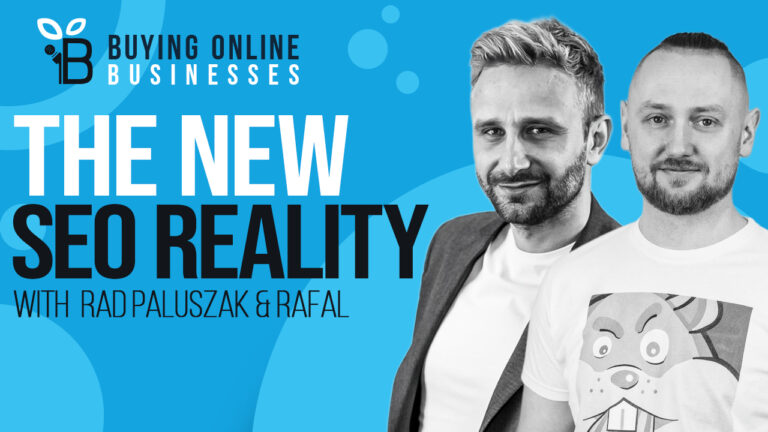
Ep 251: The New SEO Reality On How To Get Real Results For Your Content Website with Raf and Rad
Improve your site’s performance and learn how to create a link building campaign with Jaryd Krause and Maria Harutyunyan. Check out this episode!
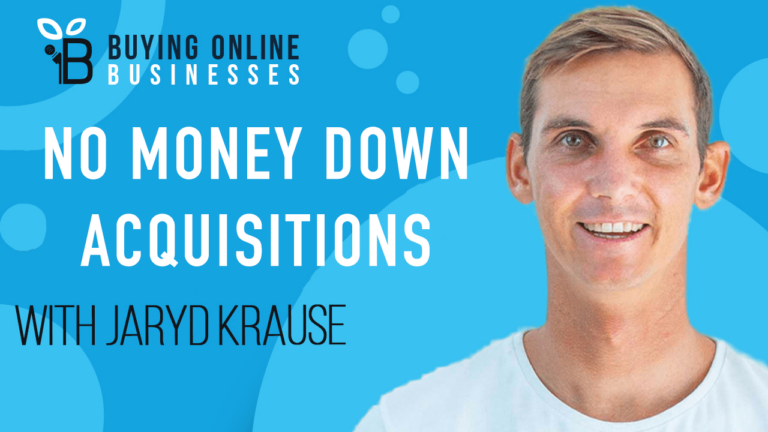
Ep 250: No Money Down Acquisitions – Can You Buy An Online Business With No Money?
Discover how to buy an online business with no money with Jaryd Krause. Know your options so you can make informed decisions.
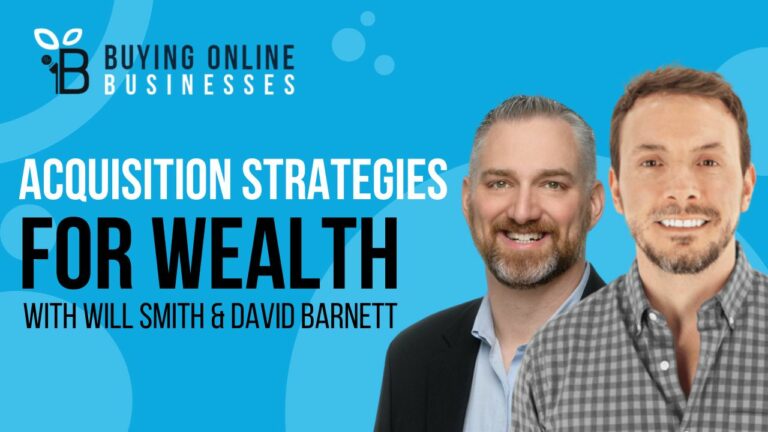
Ep 249: M&A Negotiation Strategies & Growth By Acquisition Blueprints with Will Smith & David Barnett
Gain insights about M&A negotiation strategies and growth by acquisition blueprints with Jaryd, Krause, Will Smith, and David Barnett.



